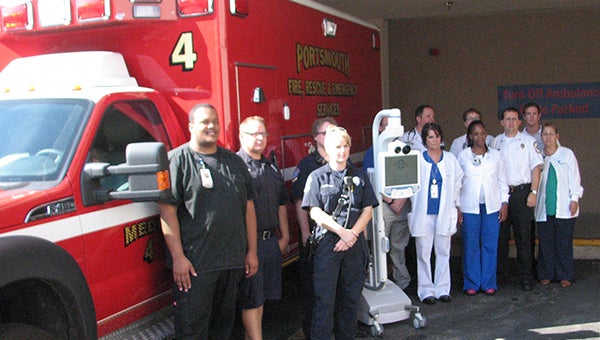Maryview, EMS unite against stroke
Published 7:58 pm Friday, August 7, 2015

Portsmouth emergency medical services personnel and medical personnel at Bon Secours Maryview Medical Center have created a partnership that helps decrease treatment time for patients who are suffering a stroke.
By Henry Luzzatto
Correspondent
In order to treat stroke victims faster and more effectively, Bon Secours Maryview Medical Center and the Portsmouth Emergency Medical Services have implemented a new procedure for stroke cases.
According to Portsmouth Fire/EMS Clinic Coordinator Amy Ward, the process was changed because the previous treatment times for strokes were too slow.
“The national goal for ‘door-to-needle time,’ the time to get from the door to treating the patient with medicine, is 60 minutes,” Ward said. “And we were not meeting that time.”
Ward said the door-to-needle time for treating patients using the new system is now closer to 30 minutes.
Under the new process, emergency medical services play a larger role, Ward said.
First, EMS technicians respond to an emergency and do an assessment to see if the patient may be having a stroke. The next step is to do blood tests while still in the field, something that used to have to wait until they got to the hospital, Ward said.
After drawing blood, the emergency responders alert the hospital that they are coming in with a patient who may be having a stroke, Ward said.
“The staff and the physician meet us at the door, and we can get a quick assessment from the physician,” Ward said.
Emergency technicians and doctors then work in tandem to evaluate the patient and get them to the CT scanner as quickly as possible, Ward said.
According to statistics compiled by Maryview Medical Center, without EMS involvement, it took an average of more than 20 minutes to get a patient to a CT scan. With EMS involvement, that number fell around 10 minutes.
By getting a patient to a scan quickly, said Kathryn Funk, the neuroscience clinical program coordinator at Bon Secours Maryview Medical Center, one can know the severity of the stroke and tell whether there is bleeding in the brain.
According to Funk, involving EMS has greatly reduced treatment time.
“We changed the process from doctor-driven to EMS-driven,” Funk said.
The new program has been successful in reducing treatment times, Funk said, but the process has not been used long enough to know whether the mortality rate for stroke has decreased because of it.
In February, Ward said, the hospital held an interdisciplinary stroke operations meeting to discuss the ways to decrease treatment times. EMS suggested that they could be involved in one way or another.
In March, Maryview Medical began to train 15 “super users” in the new procedure. The super users in turn trained more than 200 fire and rescue employees, Funk said.
Because of the unique and effective nature of this program, Funk has submitted it to the Virginia Nurses Association, the American Association of Neuroscience Nurses and the International Stroke Conference in order to potentially increase its use and exposure.
Though the process is now in wide use between the Portsmouth EMS and Maryview Medical, it has not yet spread to other hospitals or emergency services.
“Less than 10 percent of our patients come from Suffolk,” Funk said, adding that Suffolk EMS personnel have not yet been trained under the new program.
However, she said, she hopes to expand the use of the program.
“The more people know about it, they can provide better patient care,” Funk said. “It’s not just one person. It’s everyone working together.”
Though the process is much more streamlined now, Ward said, there is still room for improvement in other areas. “Any time we have a process that is good but not great, we always search for ways to make it better,” Ward said. “Our patients deserve the best.”




